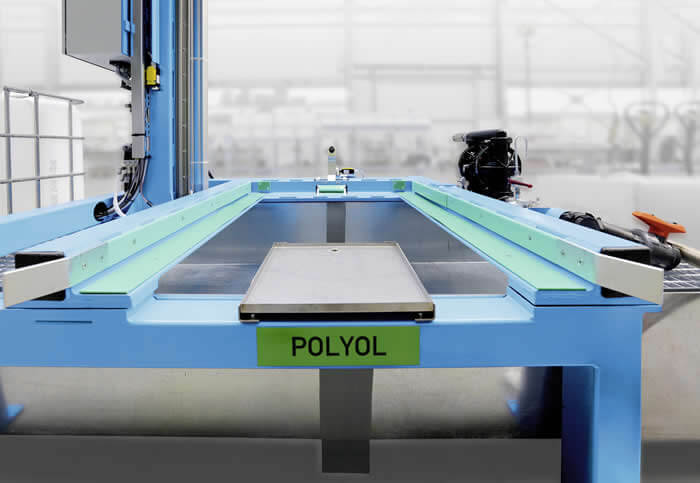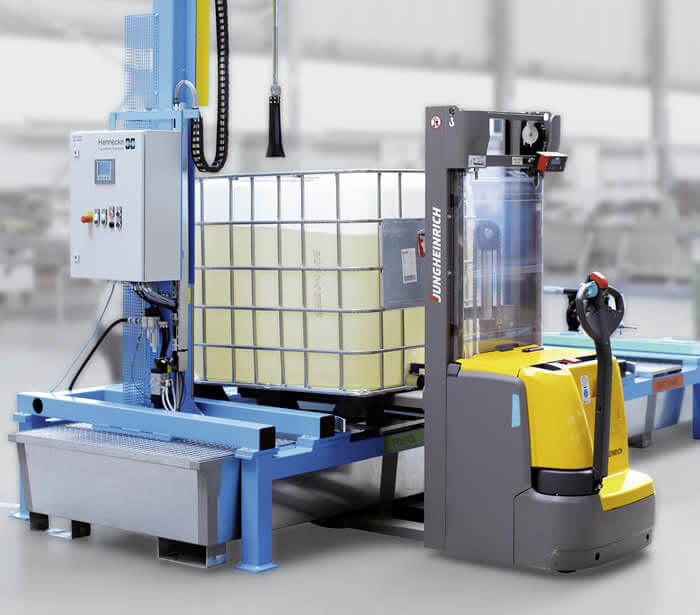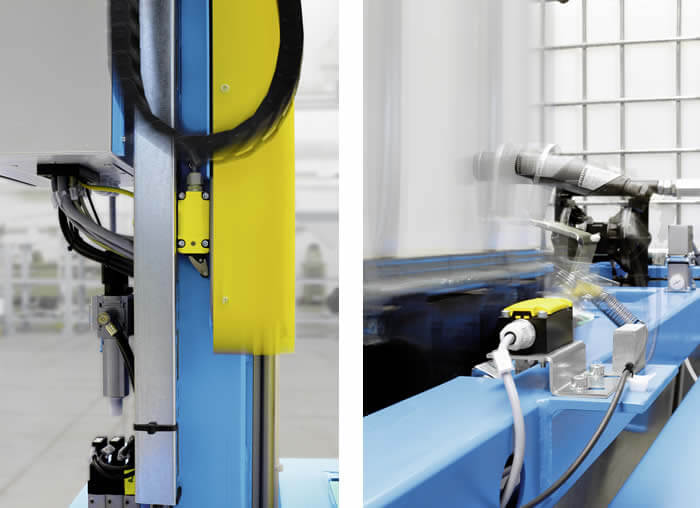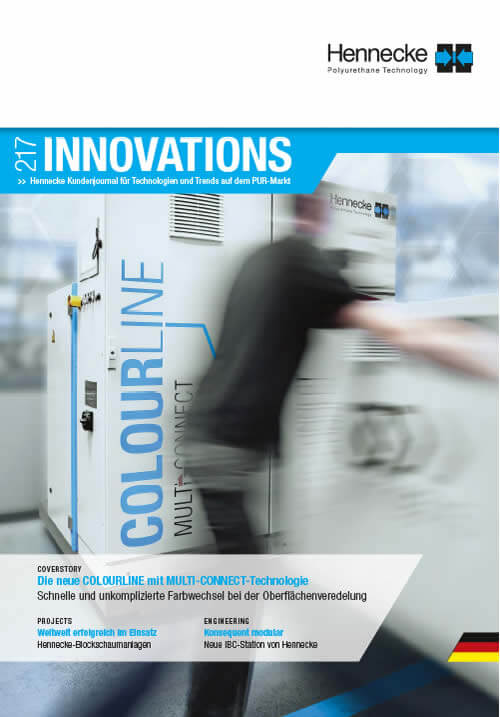Consistently modular
New Hennecke IBC station with innovative detail solutions
The use of Intermediate Bulk Containers (IBC) for the transport and storage of fluid chemicals is increasing across the world. In the processing of polyurethane as well, the 1000 kg drums offer significant advantages.
The new, modular IBC station from Hennecke greatly simplifies handling of the containers, ensures utmost process reliability and also offers an attractive price-performance ratio due to standardization and series production.
The most important components for producing polyurethane are polyol and polyisocyanate. Auxiliary materials that can be added to the polyol to facilitate processing even during production of the raw materials are above all blowing agents, activators, emulsifiers and foam stabilizers. These auxiliary materials can sediment after a short time and settle at the bottom. In order to achieve a uniform and reproducible production result, it is therefore imperative to thoroughly mix and homogenise the polyol with the auxiliary materials before the raw material is filled into the metering machine tank. The polyisocyanate, on the other hand, can be used without additional conditioning. The chemical raw materials are also hazardous materials with risk potential. Clean and safe handling of the raw materials is necessary not only for the sake of the employees but also for environmental reasons. The quality of the raw materials being processed may not be impaired by the transferring processes because it is essential for the production of high quality polyurethane products.
For PU processors with a high raw material requirement, tank storage facilities are the optimal solution for conditioning the chemicals and filling the PU metering machines. Many manufacturers with small and medium quantities of raw materials, for which a tank storage facility is not practical, cover their raw material replenishment supply with 200 kg barrels. In comparison to an IBC with a 1000 kg capacity, the PU processor must hereby replace empty barrels with full barrels far more frequently. Using IBCs prevents contaminations, disruptions, and sources of errors in the work process by loading or replacing barrels and increases the efficiency of production.
Hennecke has now developed a new IBC station especially for the use of drums, which, in addition to a consistently modular construction, contributes significant unique selling points compared to comparable solutions. The system therefore represents an optimal solution for integrating IBC containers in PU production. The advantages for users start as soon as loading: The flexible construction enables assembly by means of a stacker or lifting carriage. Each raw material component is identified at the station with coloured labeling. The IBC can be easily positioned in a ground-mounted base frame using guide rails and stops. The stirrer is then released after correct positioning and connection of a hose. At the push of a button, the stirrer drives automatically into the container. When it is completely driven in, the container also automatically seals airtight.
To achieve a safer, faster, and more effective bubble-free homogenisation of polyol with additives, Hennecke has equipped the IBC station with the newly developed and patented special stirrer FLOATJET. By means of fluid mechanical simulations, company experts have perfectly optimised the special stirrer to the special requirements.
The stirrer is folded up outside of the tank, so that it fits through the container opening. Upon driving into the tank, the stirrer automatically folds out. The large diameter of the stirrer also ensures a high degree of efficiency. Due to its special geometry, the stirrer can also be lowered almost to the bottom of the IBC. This ensures that small residual quantities are homogenised. Stirrer systems on the market up to now agitate significantly further from the bottom, leaving much greater residual amounts that cannot be homogenised.
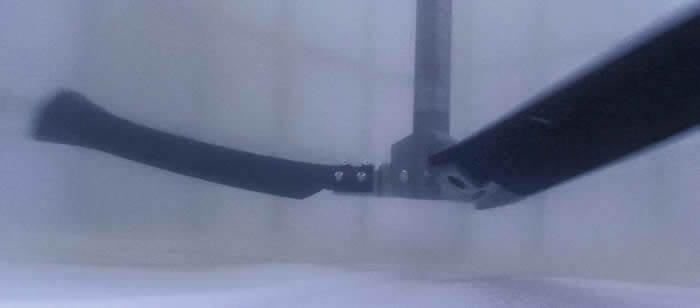
The control can store different procedures for conditioning the polyol. It can therefore be programmed, for example, that at the beginning of a set time period, the stirrer passes through continuously at a high speed to homogenise the material. During this period, removal of raw materials is blocked. After this time elapses, removal is enabled and the stirrer enters into preservation mode with a slow speed and interval switching. This guarantees that the material is always filled into the metering machine in the same conditioning. This ensures high process reliability. During removal, there is continuous filling level detection. It is thus possible to automatically control the FLOATJET as well as the pumps and to display a necessary container change. Optionally, the base frame can be expanded by a frame for placing a collecting basin and a drying cartridge for drying the inflowing air. By separating the IBC station into individual modules for the reception of polyol and isocyanate IBCs, the station can be expanded as desired, with the control always taking place via the polyol side. The IBC station can also be easily integrated into existing PU processing plants.
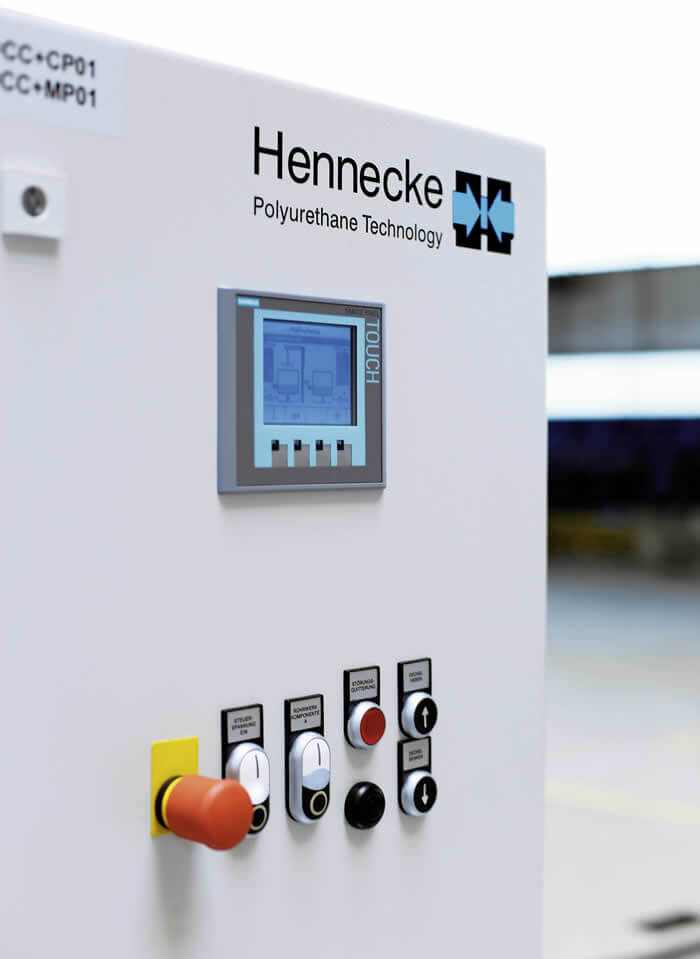
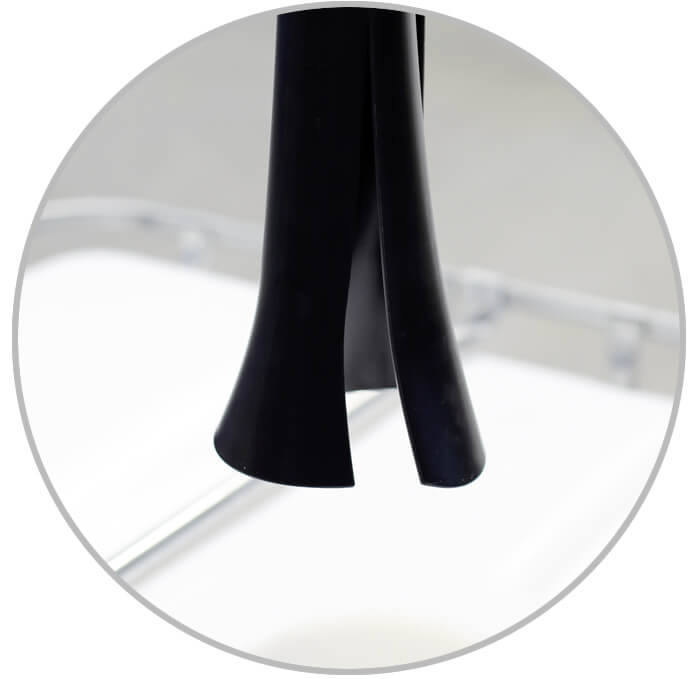
Download - Ausgabe 217 (PDF)
Zur Betrachtung benötigen Sie den Adobe® Reader®, den Sie hier kostenlos herunterladen können.
